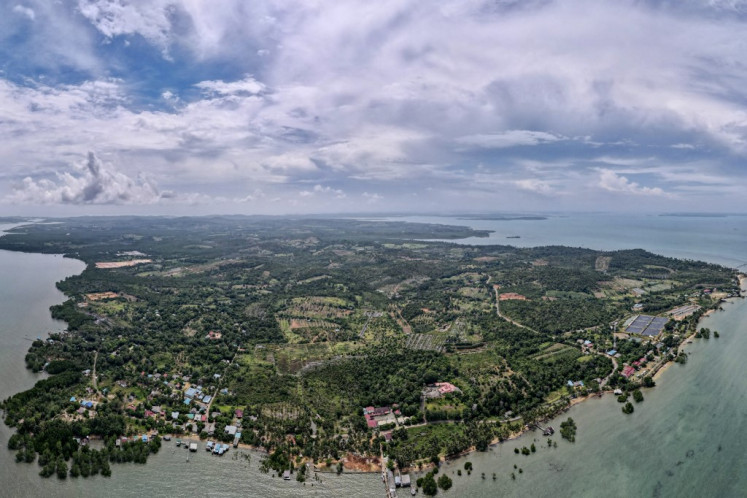Popular Reads
Top Results
Can't find what you're looking for?
View all search resultsPopular Reads
Top Results
Can't find what you're looking for?
View all search resultsBy the way ... I just can't live without Padang food
Many might think my statement is a gross exaggeration
Change text size
Gift Premium Articles
to Anyone
M
any might think my statement is a gross exaggeration. But it's true.
Just like many people from Padang, I still dependent on Padang cuisine for breakfast, lunch and dinner.
Some of my friends ' particularly those with Javanese or Sundanese roots ' often shake their heads in astonishment at my seemingly tacky culinary behavior.
But let me tell you. This is not a matter of radical love for local food. Rather, it deals with the gastronomic delights of Padang food.
Having shared this passion with other Padang food lovers, I can say that the Minangnese place much respect on these three major things: cabe (chili), gulai (curry) and beras (rice).
No traditional function is complete without the three ' spicy chili sauce; thick curry and perfect steamed rice ' served to the guests.
Spicy chili is instrumental to increasing the eater's appetite. How could you eat a meal if it doesn't give you a good stomach? Not simply do spicy dishes make you eat more but they also make a ritual out of lunch and dinner.
Padang people believe a delicious meal is one with chili on it. And many turn their noses up at dishes without spicy chili sauce for not being a 'real meal'.
What about gulai, the next essential element of our exploration of Padang cuisine?
In Padang, smart cooking means the capability of preparing gulai (curry). Rendang (beef simmered
in coconut milk and spices), asam padeh (sour and spicy stew) and kalio (watery and light-colored gravy) are just a few variations of Padang gulai.
You cannot say you are a good cook simply because you can make fried chicken, pancakes or stir-fry vegetables.
Only when someone excels at concocting gulai, then he or she really understands spices. That is why for many Padangnese, ingenuity in cooking goes hand-in-hand with a skilled gulai cook.
Last but not least, rice should be taken into account. Well, rice is not just Padangnese as it is the staple of the majority of Indonesians.
However, it is unique that Padang people only want steamed rice. No matter how poor they are, they will never shift to corn, potato or sweet potato.
Personally speaking, it is not just the savory Padang dishes that are fantastic but also the traditional snacks.
While hosting functions and events, I always serve modern cakes like brownies and muffins alongside local snacks ' from kelamai (a sweet coconut palm sugared snack), kue talam (sweet glutinous rice cake) and lapek (banana pudding).
By doing this, I intend to preserve and celebrate the traditional alongside the contemporary.
I have, however, noticed a small change in recent years.
In the past, Minangnese customers were not attracted to Javanese food and beverages because they were too sweet. Noted restaurants in Java, like Wong Solo and Ayam Goreng Nyonya Suharti, were unable to survive in West Sumatra.
Now, restaurants and cafes serving dishes from across the archipelago, such as ayam penyet (chicken with tempeh and chili sauce) and pecel lele (fried catfish and rice served with chili sauce) can be found across West Sumatra. The key to their success is in their ability, and willingness, to adapt to consumers tastes in Padang.
While Javanese, Sundanese or Jakartans could enjoy different meals without much effort when traveling across the country, the Padangnese still have trouble finding 'foreign dishes' suitable for their palate.
Though Padang restaurants are common throughout the country and rendang has been chosen as the number one dish out of the World's 50 Most Delicious Foods by 35,000 people held by CNN International in 2011 online poll, Padang cuisine remains less popular than Thai food abroad.
The reason behind this is probably that along with its strong family-oriented management, some Padang restaurants pay less attention to the international standards of quality and hygiene. But for me, just like a die-hard soccer fan, I cannot live without Padang food.
' Donny Syofyan










